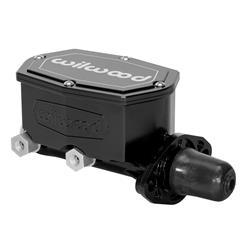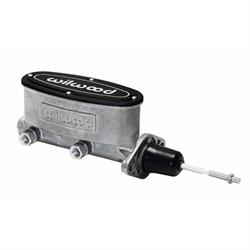Bench Bleed Master Cylinder - How To Guide
This very helpful video tutorial simply demonstrates step-by-step how to bench bleed a new master cylinder before installing it on your vehicle. This procedure is the same for manual or power brake master cylinders, and whether they are disc/drum or disc/disc applications.
Video Transcript: Wilwood Master Cylinder - Installation and Bleeding Procedure
“When installing a master cylinder, you should bench bleed it outside of the vehicle before you begin. It's advisable to do a dry fit and prepare the hard lines on the proper side and position, ready to receive a full master cylinder. If your new master cylinder comes with a push rod you can use a shifter knob or a countersunk block of wood for leverage. If your model doesn't have a push rod, you'll need a tool to depress the piston for bleeding.”
Attach The Bleeding Kit Fittings and Tubes
“Wilwood supplies a bench bleed kit with different size fittings for your application. Select the correct plastic fittings and tighten with a wrench until it starts to slip. Next attach the hoses and use the guide clip to hold the ends of the hoses low in the reservoir. It's important those ends remain below the fluid level for the entire bleed process. Once filled with new fluid we’re ready to bleed.”
Force the Air Out
“Use a screwdriver with a shaft longer than the distance the piston will travel. With this Philips head we don't need to use the included spacer during bleeding. The goal is to displace all the air from the chamber with fluid in the reservoir. If the chamber is not level air will get trapped and you won't have a successful bleed. Start by using full strokes as far as the piston allows. You'll see large bubbles at first, as the internal chambers begin filling with fluid, pushing the air out through the tubes into the reservoirs.”
Install the Master Cylinder and Bleed The Vehicle Brake Lines and Calipers/Drums
“Next, switch to quick pushes and short strokes to help burp trapped air. Keep switching from long strokes to short strokes, looking for bubbles. It should become harder to push and take about five minutes to complete. Any tiny residual bubbles you see in the tubes or reservoir it could be from the plastic fittings and will be purged in the vehicle during the full system bleed. Be careful not to introduce any air when moving your bled master cylinder back into your vehicle.”
Updated by Mark Houlahan





